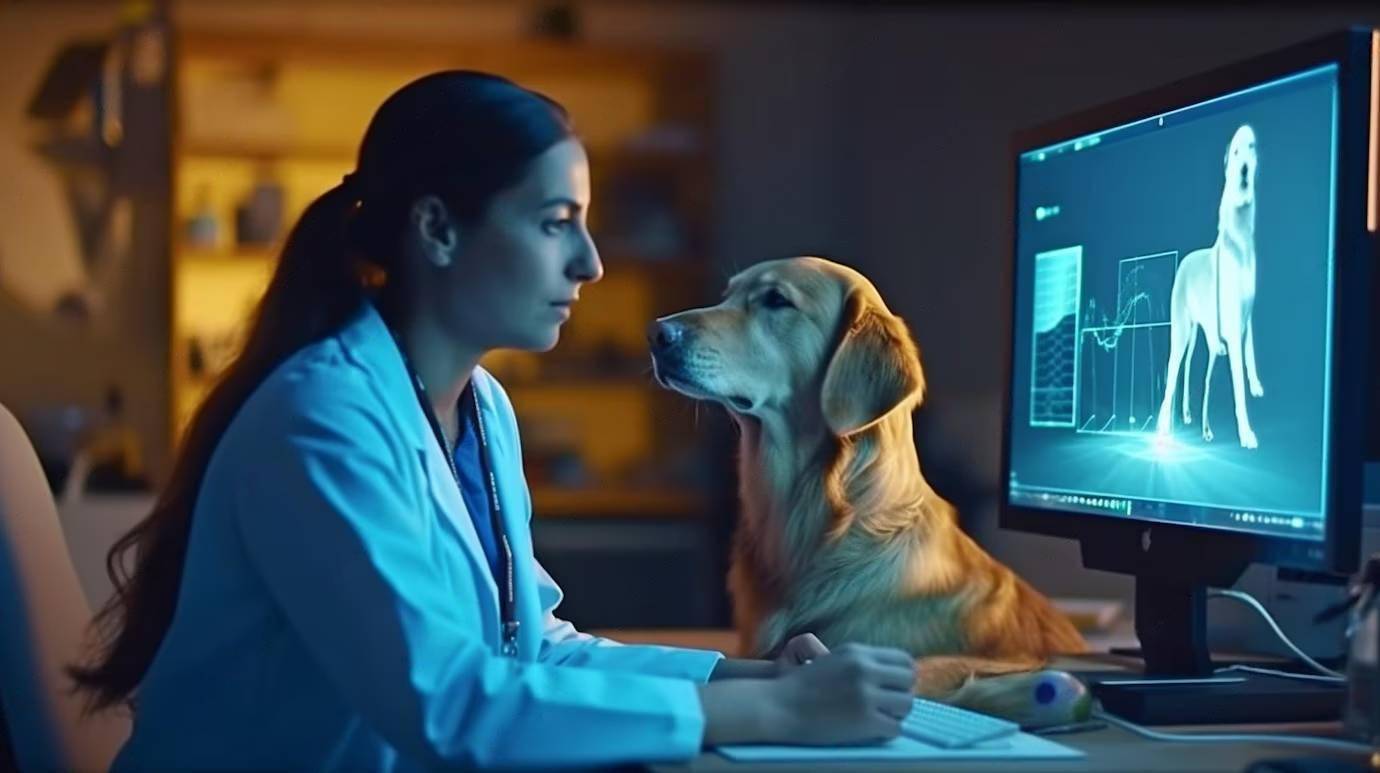
How AI and Big Data Are Changing Pet Insurance
Imagine this — your dog, Max, has been limping slightly for a few days. You’re worried but not quite sure whether it’s serious enough for a vet visit. Open your pet insurance app. Upload a short video of his walk. Then, you get an AI analysis. It suggests possible joint inflammation and recommends a vet visit. Moments later, the app pre-authorises your insurance coverage and books an appointment. Sounds futuristic? It’s not.
The pet insurance industry is changing rapidly, thanks to Artificial Intelligence (AI) and Big Data. These technologies change how we care for our pets. They offer personalised premiums, speed up claims, and provide health alerts. We must also rethink our financial plans for pet care.
In this blog, we’ll look at how AI and big data are changing pet insurance. These solutions improve policies, streamline operations, and help pet parents feel more in control and at ease. Whether you have insurance or just want to learn, you’ll see how technology is making pet care smarter and more responsive.
The Traditional Pet Insurance Model: Where It Falls Short

Before diving into the future, it helps to understand the past. Traditional pet insurance often mirrors human health insurance in all the worst ways:
- Fixed premiums that don’t reflect individual risk
- Long waiting periods and paperwork-heavy claims
- One-size-fits-all policies that ignore breed-specific or lifestyle-related needs
Pet parents often feel frustrated. They struggle with slow reimbursements, unclear terms, and inflexible coverage. AI and big data play a key role here. They don’t replace humans; they help insurers assess, manage, and personalise care better.
How AI Is Revolutionising Pet Insurance
1. Smarter Underwriting and Risk Assessment
Traditionally, underwriting used generalisations. It considers your cat’s age, breed, and vague health record. AI takes things several steps further.
Using machine learning algorithms, insurers can now:
- Analyse real-time health data from wearables and vet records
- Assess lifestyle factors like exercise patterns, location risks, and even owner behaviour
- Predict future health risks with surprising accuracy
A Labrador in a city flat, with regular exercise, faces different risks than a lazy Bulldog in a hot, humid area. AI can account for this nuance and generate dynamic, fair premiums.
2. Faster, Automated Claims Processing
One of the most frustrating parts of pet insurance is filing claims and waiting weeks (or months) to get reimbursed.
AI streamlines this in multiple ways:
- Image recognition tools scan vet bills and receipts instantly
- Natural language processing (NLP) analyses descriptions and matches them with policy terms
- Fraud detection algorithms flag suspicious claims in real-time
Some platforms even offer instant payouts within hours. That’s right — no more chasing cheques or decoding claim jargon.
3. Predictive Health Alerts and Preventive Care
AI doesn’t just react — it anticipates.
By analysing patterns from millions of pets, AI can:
- Alert you to breed-specific risks early
- Recommend pre-emptive treatments
- Notify owners of behavioural changes via smart collars or activity monitors
A pet owner shared that their insurance app noticed unusual heart rate patterns in their Golden Retriever. A vet visit showed early-stage heart disease. Thankfully, it was caught in time for treatment.
Big Data: The Backbone of Intelligent Pet Insurance
1. Aggregating Health Trends

Big data pet insurance leverages insights from thousands (even millions) of pet records. This enables:
- Population-level health trend analysis
- Real-time outbreak tracking (e.g., kennel cough in specific postcodes)
- Enhanced policy customisation based on current data
Insurers can now issue location-specific health advisories, helping pet parents take proactive action.
2. Behavioural and Environmental Data Integration
Beyond health records, big data also pulls in:
- GPS and movement data from smart collars
- Climate and pollution levels in your area
- Local vet treatment rates and hospitalisation trends
This helps insurers create complete profiles. As a result, policies become more accurate, and preventative care is more active.
3. Hyper-Personalisation of Policies
No two pets are the same, and now, their insurance policies don’t have to be either.
Using big data insights, insurers can craft:
- Breed-specific coverage
- Age and lifestyle-adjusted premiums
- Add-ons tailored to your pet’s activity level or genetic risks
It’s like having a bespoke insurance suit tailored to your pet’s needs — not a generic off-the-rack policy.
Tech in Pet Insurance: Real-World Applications
Let’s look at how tech in pet insurance is already making a difference across platforms:
Figo Pet Insurance (US & UK Markets)
- AI-driven claims chatbot available 24/7
- Cloud-based health records that sync with vet appointments
- Predictive care reminders via app notifications
Bought By Many (now ManyPets)
- Uses big data to assess breed-specific needs
- Custom policies based on vet treatment cost data
- 15-second claims submission via mobile app
Trupanion’s Vet Direct Pay
- AI pre-approves coverage in seconds
- Direct payment to participating vets — no reimbursement hassle
- Real-time claim decisions at the vet’s office
These innovations are changing a paperwork nightmare into a smooth, tech-savvy experience. Now, it puts pets and their humans first.
Challenges and Considerations
No tech revolution comes without its hiccups. AI and big data in pet insurance also raise a few key concerns:
1. Privacy and Data Security

With sensitive pet and owner data being shared across platforms, questions arise:
- How secure are these systems?
- Is my pet’s health information being sold or shared?
Tip: Always check your provider’s data policies. Opt for insurers that prioritise transparency and encryption.
2. Bias in Algorithms
Just like in human healthcare, biased AI can emerge if training data lacks diversity.
- Some breeds or geographies might be underrepresented
- Algorithms may penalise certain owners unfairly
AI can be fair and accountable when we have human oversight and use inclusive data practices.
3. Tech Literacy Gaps
Not all pet parents are tech-savvy. While apps and AI tools are powerful, they must remain user-friendly.
Anecdote: An older dog owner felt frustrated using a digital claims portal. Then the insurer added voice support and made the steps easier.
The best tech serves everyone, not just the digitally fluent.
What This Means for You as a Pet Parent
So, how does all this impact your decision-making and daily pet care?
Here’s what you gain:
- More accurate premiums based on real lifestyle factors
- Faster and fairer claims with less red tape
- Better care through early risk detection and preventative alerts
And it’s not just about convenience. It’s about creating a smarter and kinder pet care system. Here, data helps you and your pet.
Conclusion: The Future Is Furry — and Data-Driven
As we look ahead, it’s clear that AI and big data are not replacing pet care; they’re enriching it. Technology helps us be better pet parents by combining empathy and intelligence.
Now, you don’t need to guess. Say goodbye to generic coverage and old claims processes. The next time your pet feels off, AI might spot it before you do — and help you act swiftly and smartly.
Ready to upgrade your pet insurance experience? Check out providers that welcome tech innovation. Ask about wearable compatibility. Also, don’t hesitate to learn how they use your data.


